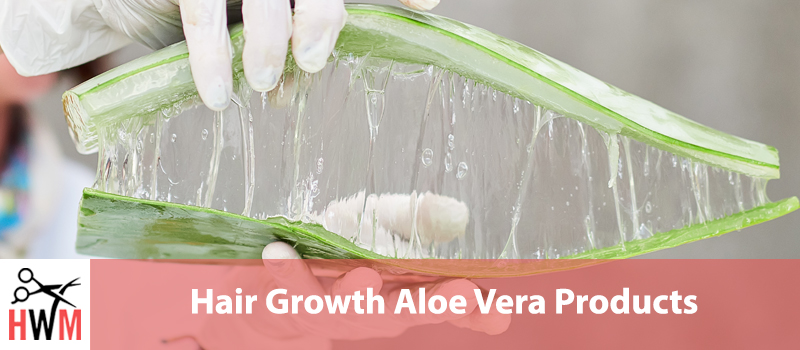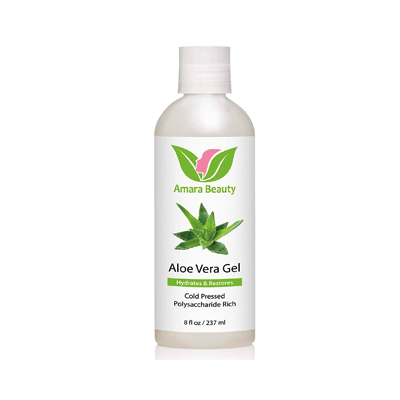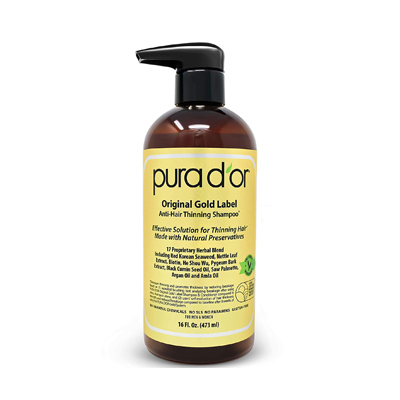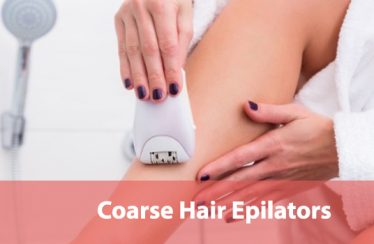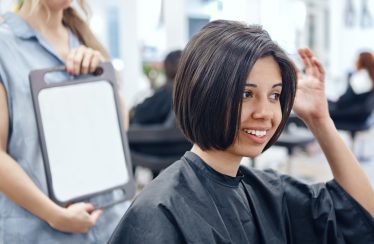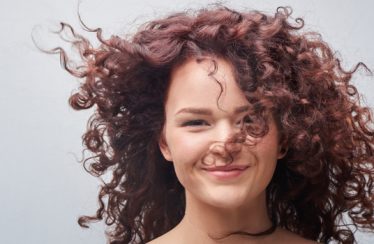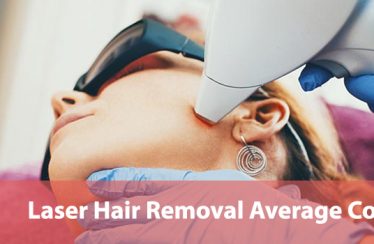People have been using aloe vera for healing various problems for more than 4,000 years now. It was used as a healing agent as far back as ancient Mesopotamia in 2100 BC! So, if someone has advised you to try aloe vera for hair growth, then you should listen to them.
Even if you don’t want to give importance to aloe vera’s historical relevance, you can’t ignore the fact that most hair care products in the modern world incorporate aloe vera in one way or another.
Therefore, if you’re looking to delve deeper into the benefits of aloe vera for hair growth, then you should pat yourself on the back for two reasons. The first is that you’re not on some wild goose chase, and the second is that you’ve arrived at just the right place to find answers to all questions about aloe vera and its significance to hair growth.
In this guide, we’ll explain everything you need to know to use aloe vera for hair growth. What will you find on this page? Here is an easy-to-click navigation panel that you can use to not only see the contents of this page but also skip to sections that attract you the most.
| Aloe Vera Gel |
|---|
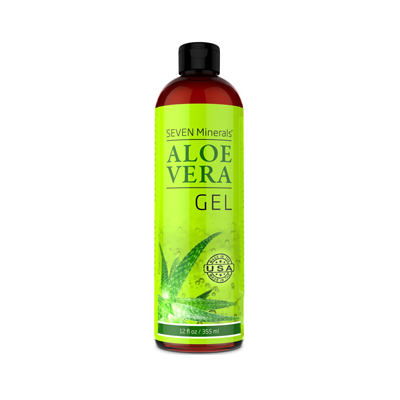 |
| Seven Minerals Organic Aloe Vera Gel |
| 4.75/5.0 |
| Product Type: Aloe Vera Gel |
| Volume: 12 ounces |
| Cost: $1.66 per ounce |
| A great aloe vera gel product that is free from xanthan and is even available at a competitive price, uses aloe vera from USDA certified fields. |
| Check Amazon |
| Aloe Vera Shampoo |
|---|
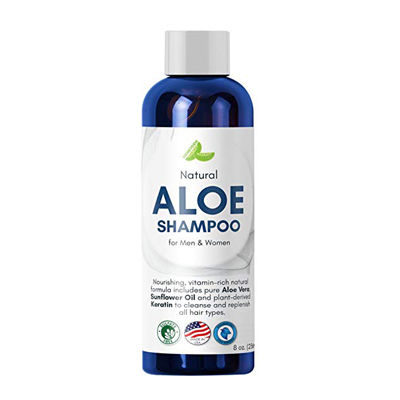 |
| Honeydew Aloe Vera Shampoo with Sunflower & Keratin |
| 4.5/5.0 |
| Product Type: Aloe Vera Shampoo |
| Volume: 8 ounces |
| Cost: $1.24 per ounce |
| The best option with aloe vera as its primary ingredient, this hair growth shampoo is also excellent at repairing and maintaining damaged hair. |
| Check Amazon |
| Aloe Vera Conditioner |
|---|
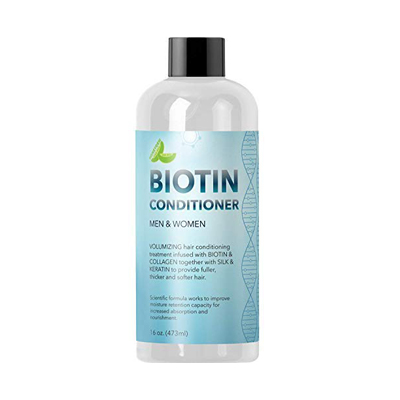 |
| Maple Holistics Natural Biotin Conditioner for Hair Loss |
| 4.75/5.0 |
| Product Type: Aloe Vera Conditioner |
| Volume: 16 ounces |
| Cost: $1.18 per ounce |
| An aloe vera conditioner from a highly reliable company that offers the numerous benefits of biotin as well, free of parabens and sulfates. |
| Check Amazon |
- Can Aloe Vera Really Encourage Hair Growth?
- How Does Aloe Vera Encourage Hair Growth?
- Are There Other Benefits of Aloe Vera?
- Are There Side-Effects of Aloe Vera You Need to Be Aware Of?
- How Can You Use Aloe Vera For Hair Growth?
- How to Make Aloe Vera Gel at Home
- Best Aloe Vera Products Comparison Table
- Best Aloe Vera Gels: Detailed Reviews
- Best Aloe Vera Shampoos: Detailed Reviews
- Best Aloe Vera Conditioners: Detailed Reviews
Can Aloe Vera Really Encourage Hair Growth?
This is the big question. It has to be asked because it is entirely possible that people have been using aloe vera for more than 4000 years as a mistake. Moreover, it has to be asked because it is important to know to what extent aloe vera can help towards hair growth.
The answer, as is always the case with these things, is not clear cut.
In the majority of cases, problems with hair growth are caused by hormonal imbalance. This could be caused by medical conditions, genetic predisposition, or nutritional deficiencies. The thing with all these causes is that they’re system-wide. This means that they occur all over the body.
Therefore, no single topical treatment will ever be able to solve problems associated with hair growthcompletely. Even drugs like finasteride and minoxidil can only help hair growth temporarily. The moment you stop using those drugs, their effects wear off.
However, this doesn’t mean that topically applied solutions don’t work. They do so long as the root cause is addressed, as well. This holds for aloe vera-based solutions too. Aloe vera and other similar naturally occurring substances can make a huge difference to hair growth so long as they aren’t expected to do it singlehandedly.
When combined with dietary changes and lifestyle improvements, aloe vera can not only slow down the rate at which you’re losing your hair but also promote hair growth.
Moreover, the results you’ll get by using aloe vera for hair growth, along with dietary and lifestyle-related improvements, will be far more long-lasting than artificial solutions. You’ll just have to give it time to have an impact.
How DoesAloe Vera Encourage Hair Growth?
One of the most commonly known benefits of aloe vera is its ability to counter infections. It is an extremely effective antimicrobial agent. This is one of the reasons why aloe vera is seen to be so effective against seborrheic dermatitis and other dermal problems caused by microbes. Since infections can cause hair loss or restrict hair growth, this property of aloe vera is very helpful.
The reason why aloe vera is so good against infections is that it brings down inflammation. Inflammation is also responsible for adversely affecting hair growth and promoting hair loss because it makes the hair follicles in the scalp more sensitive to dihydrotestosterone or DHT. Therefore, even though aloe vera isn’t a direct DHT blocker, it does help against hair growth problems such as pattern baldness.
Aloe vera boosts hair growth directly too. It does this through two complementary channels. The first is that it is full of nutrients that can nourish the hair follicles and the hair. The second is that it improves circulation, ensuring that those nutrients are distributed properly.
In terms of nutrition, aloe vera is one of the richest natural sources. It contains more than 70 different ingredients. These include 12 vitamins, 18 amino acids, and 20 minerals. Every nutrient in aloe vera has the potential to boost hair growth.
Despite this, one particular type of nutrient stands out for its ability to encourage hair growth – proteolytic enzymes. Proteolytic enzymes are important because they facilitate the breakdown of complex proteins into amino acids. The body can then utilize these amino acids in various ways to form other types of proteins.
Therefore, aloe vera ensures a steady supply of key amino acids to the hair follicles. This helps them maintain existing hair, repair damaged hair, and grow new hair since hair is largely made up of a protein called keratin. Moreover, since proteins are important to the health of hair follicles too, aloe vera’s proteolytic enzymes can end up reviving dormant hair follicles.
Even though aloe vera’s ability to improve blood circulation hasn’t been proven through human scientific trials, it has been proven through studies on animals. For instance, this study on rats found conclusive evidence that aloe vera boosts blood circulation.
Are There Other Benefits of Aloe Vera?
Aloe vera is also a great moisturizer of the scalp. Aloe vera gel naturally contains a lot of moisture, which is how it conditions the hair so well. In fact, its conditioning power is such that it is capable of moisturizing extremely dry hair if used in a deep conditioning system.
Aloe vera excels in cleansing the scalp too. Its antimicrobial properties help against microbes, but it is also capable of removing buildup in the scalp. It wouldn’t even matter whether the buildup is caused by excess sebum, product use, or even dust.
Are There Side-Effects of Aloe Vera You Need to Be Aware Of?
The biggest risk of using aloe vera, as is the case with all naturally occurring substances, is an allergic reaction. If you’re allergic to aloe vera, your reaction could range from being so mild as to be negligible to being so debilitating as to need emergency medical attention.
Generally speaking, though, severe allergic reactions are incredibly rare when it comes to aloe vera. In fact, allergic reactions usually appear as itching or breakouts, and even those are quite uncommon. Some people even claim that they’re able to use aloe vera on their scalps but breakout when they use it on their skin.
The best way to see whether you’re allergic to aloe vera is to spot-test it. Pick a safe spot on your body such as the inside of your elbow and apply a little bit of aloe vera to the region. If you don’t get a reaction, then you’re safe.
Even if you do react to the spot test, you may still not be allergic to aloe vera. This is especially possible if you’ve made your own aloe vera treatment or are using one from an unreliable source. In such a scenario, the cause of the problem is a specific compound found in aloe vera called aloin or barbaloin.
Aloin is an irritant that can cause fierce itching and reddeningof the skin. While removing aloin from an aloe vera leaf is very easy and simple, negligence or impatience can often result in it being left behind. When this happens, it will become a part of the gel and cause reactions that are often misconstrued as allergic.
How Can You Use Aloe Vera For Hair Growth?
While you can always ingest aloe vera in either the gel form or a juice form, its hair growth qualities are best leveraged by applying it topically to the scalp. Topically, you can use aloe vera in three ways – in the form of a gel, incorporated into a shampoo, and as an ingredient in a conditioner.
Multiple aloe vera products are available in the market in each of these three formats, as well. Buying reliable products containing aloe vera is the easiest way of gaining its hair growth benefits. In fact, we’ve reviewed the best options for you later in this guide.
However, if you have aloe vera plants at home, you can make aloe vera gel at home too. While doing this is more cumbersome and time-consuming, it can save you a lot of money. You will still have to learn how to make the gel, though.
This is why we’ll explain the entire process in detail to you before giving you in-depth reviews of the best aloe vera products you can buy. You can, of course, skip directly to the reviews from the navigation panel provided above if you’re not interested in making aloe vera gel at home.
How to Make Aloe Vera Gel at Home
If you have easy access to a mature aloe vera plant, making aloe vera gel at home shouldn’t be that difficult. All you need to do is stick to the process explained below. Here are the steps.
Step 1: Cutting the Aloe Vera Leaves
Cut one or a few of the largest aloe vera leaves on your plant. How many you cut will depend on how much gel you want to make. Typically, you should have enough gel for a week or two if you cut two to three leaves.
However, the leaves need to be large. If they’re smaller, get more. Also, you need to remember that if you take too many leaves from the plant, it will die.
Further, make sure you only go for the outermost leaves since they’ll be the most mature. Additionally, ensure that they attach to the root of the plant. Don’t tear the leaves off as that would damage the plant and may even make your task more difficult. Use either a pair of sharp scissors or a knife.
Step 2: Draining Aloin from the Aloe Vera Leaves
Once you have the aloe vera leaves, you need to prop them up in a glass jar. This is done to allow the aloin to drain out of the leaves. Aloin is a yellow or slightly brownish liquid in aloe vera that can cause breakouts.
Leaving the aloe vera leaves with the cut side down for 10 to 15 minutes ensures that all the aloin drains out. If you want to be even surer, leave them standing longer. You’ll be able to see the aloin at the bottom of the glass jar.
Step 3: Removing the Skin of the Aloe Vera Leaves
The next step is to take the aloe vera leaf out and remove its skin. Only remove the skin from one side and not both. You can use a vegetable peeler for this job.
You can choose to peel the whole leaf in a single motion or cut the leaf into smaller chunks and peel each of them separately. It depends on your level of skill with the peeler, but we recommend keeping the leaf whole. This will make future steps easier.
Step 4: Getting the Gel out of the Aloe Vera Leaves
Place the leaf in your hand or a flat surface with the skin-side down and use a spoon to scoop out the translucent gel. Scoop out all the gel from all the leaves. Make sure leaf fibers don’t get into the gel. Also, ensure that the gel is in a clean container and doesn’t get contaminated.
Put the gel in a blender and blend till it becomes slightly frothy. Don’t worry. The froth will go away. Before you blend the gel, you have the option of mixing other ingredients.
At the very least, we recommend mixing it with either powdered vitamin C or vitamin E because they will help preserve the aloe vera gel naturally. Other ingredients you can mix into the gel include:
Nourishing Oils:
While aloe vera offers up a lot of nutrients, you can give your scalp, follicles, and hair strands even more by combining the gel with other highly nourishing ingredients.
Various carrier oils are excellent for prolonging and increasing the effectiveness of your aloe vera gel. A few options include coconut oil, castor oil, olive oil, avocado oil, and argan oil. Adding one or more of these oils will also make the blend great at moisturizing your hair.
DHT Blockers:
If you’re experiencing slow hair growth because of excess DHT in your scalp or increased sensitivity to DHT in general, then you should consider blending one or more naturally occurring DHT blockers in your homemade aloe vera gel. DHT blockers do their job in two different ways.
Since DHT is a modified form of excess testosterone in the body, the first way is for them to prevent the conversion from taking place. Such DHT blockers prevent excess DHT from accumulating in the scalp by inhibiting the enzyme responsible for the conversion process.
The other way is to prevent DHT from affecting the natural state of hair follicles. When excess DHT bonds with certain receptors on the hair follicles, it can stunt their growth. This causes them to shrink in size and become incapable of growing more hair. Therefore, the second way that DHT blockers work is to prevent this bonding from taking place by bonding with the pertinent hair follicles receptors themselves.
Both methods are equally effective. Numerous DHT blockers exist in nature, so you’ll have a wide range of options to choose from. The most common DHT blockers you should consider, though, are zinc, jojoba oil, rosemary oil, cedarwood oil, and saw palmetto.
Essential Oils:
Essential oils can offer a wide array of benefits. While all of them will, in some way or another, contribute to the primary hair growth-related qualities of aloe vera gel, you may want to choose them based on your hair type and current hair condition. Keep in mind that essential oils don’t need to be used in large quantities.
In fact, you’ll only have to put a few drops of your chosen essential oil into the aloe vera gel before blending it. Further, the quantity needed is so small that you can use more than one essential oil. Apart from the DHT blocking oils mentioned above, essential oils you can consider are:
- Almond oil: Almond oil is a great lightweight option for people already oily hair. It contains multiple nutrients, including antioxidants, vitamins, and essential fatty acids.
- Macadamia oil: Macadamia oil is another great example of a highly nourishing essential oil. However, its real qualities shine through on very damaged or extra dry hair because it is an extremely strong moisturizer. It also coats and protects hair in case you like your hot styling tools.
- Tea tree oil: Tea tree oil will compliment aloe vera gel very well because it has similar qualities. It is a great cleanser and a very effective antimicrobial agent, as well. As a result, it is an excellent choice for people with heavy buildup in the scalp.
- Lavender oil: Apart from its amazing smell, lavender oil improves the health of hair follicles directly. It is scientifically proven to not only increase the number of hair follicles but also improve their depth in the scalp by thickening the dermal layer. So, lavender oil is an incredible addition to the aloe vera gel for people with damaged scalp and follicles.
- Peppermint oil: Use peppermint oil as a direct replacement for lavender oil. If you don’t like the lavender smell or find it too feminine, you can use peppermint oil as a replacement. Peppermint oil has exactly the same qualities as lavender oil but offers a different and more refreshing minty scent.
Honey
Adding honey into your aloe vera gel will turn it into a deep conditioning treatment with antimicrobial, cleansing, and hair growth qualities. This is particularly true because honey and aloe vera gel are usually mixed with coconut oil to get the right consistency.
Onion Juice
Onion juice is one of those hair health solutions that people shy away from. The reason, as you’ve probably already guessed, is its pungency. By combining onion juice with aloe vera gel, you can reduce that pungency to the point that you can reap its benefits.
It has some glorious benefits for hair, hair follicles, and scalp too. It is, in fact, beneficial in every way possible. The source of most of these qualities is onion’s sulfur content.
Sulfur is important to various bodily processes, including the production of collagen, which improves the production of hair and cells in the hair follicles. Further, the sulfur in onion comes with huge amounts of amino acids. Your hair follicles can use these amino acids to strengthen existing hair and grow more hair.
Another way that onion juice helps hair growth is by boosting blood circulation. With better circulation, hair follicles receive more nutrients that they can use for their upkeep and the production of hair.
Lemon Juice
The most important nutrient in lemon juice is vitamin C. Like the sulfur in onion juice, the vitamin C in lemon juice can boost the production of collagen in the scalp.
As a result, lemon juice can also facilitate the production of cells in the scalp. In fact, lemon juice and onion juice work well together as a part of aloe vera gel, particularly since the former will mask the pungency of the latter further.
Baking Soda
You can use baking soda and aloe vera gel to make your very own DIY shampoo. However, only mixing baking soda and aloe vera gel will result in a very simplistic and crude blend. It would be better to augment the mix with other ingredients such as coconut milk and honey.
In terms of ratio, the baking soda and honey both will need to be about 50 percent of the aloe vera gel. Coconut milk, being runnier, needs to be about 25 percent of the aloe vera gel.
Even though making your own aloe vera gel offers a lot of flexibility while saving you a lot of money, it isn’t the most convenient way of leveraging aloe vera’s hair growth properties.
This is especially true if you have heavily packed schedules and are trying to juggle multiple responsibilities. For people in a hurry, buying aloe vera based products will always be the easier option. The following are our picks.
Best Aloe Vera Products Comparison Table
| Product Name | Product Type | Volume | Cost (*Approx.) | Price |
|---|---|---|---|---|
| Seven Minerals Organic Aloe Vera Gel | Aloe Vera Gel | 12 ounces | $1.66 per ounce | Check Price |
| Amara Beauty Aloe Vera Gel | Aloe Vera Gel | 8 ounces | $1.99 per ounce | Check Price |
| PURA D’OR Original Gold Label Anti-Thinning Shampoo | Aloe Vera Shampoo | 16 ounces | $1.80 per ounce | Check Price |
| Honeydew Aloe Vera Shampoo with Sunflower & Keratin | Aloe Vera Shampoo | 8 ounces | $1.24 per ounce | Check Price |
| Maple Holistics Natural Biotin Conditioner for Hair Loss | Aloe Vera Conditioner | 16 ounces | $1.18 per ounce | Check Price |
| Maple Holistics Silk18 Natural Hair Conditioner | Aloe Vera Conditioner | 16 ounces | $1.12 per ounce | Check Price |
Best Aloe Vera Gels: Detailed Reviews
1. Seven Minerals Organic Aloe Vera Gel (Best Aloe Vera Gel)
Editor’s Rating: 4.75/5.0
The most important thing you need to keep in mind while choosing commercially available aloe vera gels is their purity. The brand Seven Minerals specifically stands out from this perspective.
They make their aloe vera gel from freshly cut aloe leaves sourced from plants grown in USDA certified fields. The family-owned and operated company even reveals that their fields are located in southern Texas. It cannot get more organic and trustworthy than this.
However, there’s a dark side to products that are this pure – allergies. This aloe vera gel is incredibly strong. While this is a good thing for most people, it is problematic for first-time users who don’t know that they’re allergic to aloe vera. In fact, such is the potency of this product that even the company advises its customers to spot test this gel in a less sensitive part of the body.
Since aloe vera gel is perishable, it needs a preservative to prevent it from going bad too soon. While we suggested using vitamin E or vitamin C in our aloe vera gel DIY recipe, Seven Minerals went in a more exotic direction.
They mix their aloe vera gel with agar sourced from red algae instead of using the thickener more common in the industry – xanthan. If you’re a believer that xanthan is harmful to health, then you’ll definitely view its absence as another great plus for this product.
Incidentally, you’ll be glad to know that the seaweed extract used in this gel as a thickener doesn’t interfere with the quick-absorbing qualities of the gel. Unfortunately, it adds its own brand of strangeness to the already peculiar smell of aloe vera.
This blend of weird smells might be too much for many of you. We can only suggest that you tolerate it for the sake of all the benefits of this product or mix it with some natural fragrance-imparting essential oil.
Another great thing we noticed with this product from Seven Minerals is that they send a very extensive eBook to everyone who buys this gel. The eBook consists of various facts you need to know about aloe vera along with 30 different DIY recipes.
The recipes cater to a wide variety of needs, including those beyond hair care. This eBook will teach you how to use aloe vera gel to make aftershaves and baby wipes!
You can get this product in three differently sized bottles as well. There’s the trial bottle containing only two ounces of the gel that you can get to test this product out. If it works for you, you can go for the 12-ounce bottle for regular use.
If this product manages to turn you into a fan as it tends to do to most people, you can go for the 128-ounce jug. We’re sure that you know that the bigger you go, the more affordable you’ll find this product.
Who’s it for: If you’re afraid of the negative effects of xanthan and still want a good aloe vera gel, get this one from Seven Minerals.
| Tech Specs |
|---|
| Product Type: Aloe vera gel |
| Product Volume: 12 ounces |
| Active ingredients: Aloe vera, agar, citric acid, and vitamin C |
| The Pros |
|---|
| Uses aloe vera from USDA certified fields |
| Comes with an eBook containing 30 recipes |
| Available in three different sizes |
| Free of xanthan |
| Uses natural thickener instead |
| The Cons |
|---|
| Very strong formulation |
| Can end up causing allergic reactions |
| The strange smell of aloe vera and seaweed |
2. Amara Beauty Aloe Vera Gel
Editor’s Rating: 4.25/5.0
In terms of the actual aloe vera gel, this product from Amara Beauty is comparable to the one from Seven Minerals. Despite this, it scored lower in our assessment than the other product.The reason is twofold.
The first and most obvious is that it is slightly more expensive than its counterpart. Further, it offers less value than the other product because of various reasons. For example, it neither comes with an elaborate nor are there size options for you to choose from.
The other reason why it scored lower is its consistency. Most people define gels as a thick, clumpy, and semisolid substance. However, this product has a consistency that is more semiliquid than semisolid. In fact, it can be best described as a very liquid gel.
While this doesn’t take away from this product’s benefits, it does ruin the experience of using a gel. In fact, many of this company’s customers have pointed out this as a major flaw in this product.If you’re not fussy about the consistency, though, this aloe vera gel is a very good alternative to the one from Seven Minerals.
It is made from organic cold-pressed aloe, which accounts for 99.75 percent of the product. The missing 0.25 percent is accounted entirely by the preservatives it contains. As a result, you don’t need to worry about parabens, dyes, or fragrances. In fact, this product is vegan and cruelty-free both!
However, it does contain xanthan. Xanthan has a tenuous link with respiratory and digestive problems. Owing to the bad press it has received, many people choose to avoid it wherever possible. While the evidence may not be definitive, it is significant enough to worry a health-conscious person. Therefore, if you avoid xanthan then you’ll want to avoid this product too.
As is the case with very pure, natural products, this one also poses the risk of causing severe allergic reactions. So, this is something you should keep in mind. The best way to avoid unforeseen reactions is to spot test the product.
In case you do get a reaction in the spot test, you’ll have the option of returning the product to the company. It offers a 100 percent, no-questions-asked, money-back guarantee. You won’t even have to send the product back and incur shipping costs. Just toss it into the trash or, better yet, give it to someone not allergic to aloe vera.
Its smell is distinctly aloe vera. So, you’ll either have to come to terms with that or mix in essential oils that have a pleasant smell. We recommend either peppermint oil or lavender oil.
Who’s it for: If you would like your aloe vera gel to have a slightly thinner consistency, get this product from Amara Beauty.
| Tech Specs |
|---|
| Product Type: Aloe vera gel |
| Product Volume: 8 ounces |
| Active ingredients: Aloe vera, citric acid, vitamin C, and xanthan |
| The Pros |
|---|
| Uses cold-pressed aloe vera |
| Thin gel-like consistency absorbs well |
| Supported by 100% money-back guarantee |
| The Cons |
|---|
| Can end up causing allergic reactions |
| Might be a little too thin |
| Slightly on the expensive side |
Best Aloe Vera Shampoos: Detailed Reviews
1. PURA D’OR Original Gold Label Anti-Thinning Shampoo
Editor’s Rating: 4.5/5.0
We’re experts in hair care, hair loss, and hair growth. More importantly, we’ve studied the market and written about various solutions to hair problems. The fact that we keep writing about this shampoo from PURA D’OR in widely diverging contexts is indicative of how much of a complete product it is.
We were compelled to include this shampoo in this guide, even though aloe vera isn’t a major ingredient here. However, it is one part of a formula that is one of the most extensive in terms of how many ingredients it contains.
Even though aloe vera doesn’t play as important a role in this shampoo as in other products reviewed in this guide, the shampoo achieves the primary goal of slowing down hair loss and facilitating hair growth easily.
In fact, this shampoo caters to all possible hair problems, including dandruff, infections, hair loss, dryness, frizz, hair thinning, and buildup. It does this through ingredients like tea tree oil, he shouwu, black cumin seed oil, clary sage, amla, biotin, argan oil, and niacin.
The tea tree oil complements aloe vera wonderfully with its antimicrobial properties, while argan oil nourishes the follicles and the hair while providing a lot moisture as well.
Moreover, ingredients such as niacin, black cumin seed oil, clary sage, and, most importantly, biotin also provide an extremely wide range of nutrients. Further, he shouwu in the formula improves blood circulation, which, in turn, ensures better absorption of the provided nutrients.
This shampoo is also beneficial if you’re genetically predisposed to losing hair, i.e. pattern baldness or androgenetic alopecia owing to the DHT blockers it contains. This shampoo’s formula is loaded with no fewer than nine amazing DHT blockers, including nettle extract, pumpkin seed, saw palmetto, cedarwood, rosemary, pygeum bark, green tea, grapefruit seed, and zinc.
The best part is that this shampoo is organic and doesn’t contain any sulfates or parabens. This makes it one of the gentlest shampoos in the market and ideal for all hair types. However, it doesn’t mean that it can’t produce sufficient lather. The lather it produces is comparable to shampoos with heavy concentrations of surfactants.
Since smell is very important when it comes to shampoos, you’ll be happy to know that this shampoo’s scent has been described as “divine” by many of its users. We agree with that assessment as well. This shampoo’s herbal smell with its citrus note is quite heavenly. The citrus element will also make your scalp tingle, of course.
This shampoo comes with a pump, but the pump is quite ineffective. Partly, the reason for this is that this shampoo is incredibly thick.
Who’s it for: If you don’t need aloe vera to be the central ingredient and are only looking to boost hair growth, then get this shampoo from PURA D’OR.
| Tech Specs |
|---|
| Product Type: Aloe Vera Shampoo |
| Product Volume: 16 ounces |
| Active ingredients: Biotin, Argan Oil, Niacin, Nettle Extract, Pumpkin Seed, Black Cumin Seed Oil, Saw Palmetto, He Shou Wu, Red Korean Seaweed, Aloe Vera, Tea Tree Oil, Cedarwood, Hibiscus, Clary Sage, Rosemary, Pygeum Bark, Green Tea, Amla, Lemon Peel, Grapefruit Seed, Lemongrass, Willow Bark, Vitamin E, and Zinc |
| The Pros |
|---|
| Helps hair grow in multiple ways |
| Deals with dandruff as well |
| Contains a very impressive set of ingredients |
| Can be used on all hair types |
| Lathers up well |
| Herbal, citrusy scent appeals to everyone |
| Makes the scalp tingle after every wash |
| The bottle comes with a pump |
| Free of parabens and sulfates |
| The Cons |
|---|
| Aloe vera isn’t the primary ingredient |
| The pump isn’t all that helpful |
| The shampoo’s consistency is too thick |
2. Honeydew Aloe Vera Shampoo with Sunflower & Keratin (Best Aloe Vera Shampoo)
Editor’s Rating: 4.5/5.0
Unlike the other shampoo we’ve reviewed in this guide, this one from Honeydew has aloe vera as its primary ingredient. While it offers all the benefits of aloe vera, its formula incorporates other complementary and beneficial ingredients too.
These include sunflower oil and keratin. The sunflower oil is acquired through cold pressing while this shampoo’s keratin content is plant-derived. The amino acids in sunflower oil combine perfectly with the keratin to give this shampoo excellent hair repairing properties.
These ingredients, along with aloe vera, also ensure that this shampoo provides ample micronutrients to the scalp, hair follicles, and the hair. The micronutrients in this shampoo are highlighted by the five primary vitamins – A, B, C, D, and E.
As is evident, this is a 100 percent natural shampoo that doesn’t contain any artificial substances like sulfates or parabens. This makes it a great choice for all hair types, including colored and chemically treated hair. Despite the absence of surfactants like sulfates, this shampoo still manages to produce considerable lather.
Because of this reason, itcleanses the scalp really well. In fact, some people may find it a little too effective at cleansing the hair and scalp. It can leave hair a bit too dry and stripped in some scenarios. This is the primary problem with this shampoo because it disqualifies it as an option for people with dry or damaged hair.
This shampoo is also hypoallergenic. So, if you’re allergic, then this shampoo should be a safe choice for you. You’ll also be pleased to know that this is a vegan and cruelty-free shampoo that comes in an environment-friendly bottle.
One difference between this shampoo and most natural aloe vera products is that it doesn’t have the distinctly unlikable aloe vera smell. Instead, it has a fresh scent that most people like, even though it can be a bit too overpowering.
This shampoo is affordably priced and will fit within the budget of most people. Even if you try this shampoo and it doesn’t suit you, you’ll be able to return it due to the 100 percent money-back guarantee offered by the company. Its thick consistency also helps in making this shampoo affordable because it means that the bottle lasts a really long time.
Further, this shampoo will also appeal to patriots because it is manufactured in the US.
Who’s it for: If you’re looking for the best hair growth shampoo that has aloe vera as its primary ingredient, get this one from Honeydew.
| Tech Specs |
|---|
| Product Type: Aloe Vera Shampoo |
| Product Volume: 8 ounces |
| Active ingredients: Aloe vera, D-panthenol, sunflower oil, jojoba oil, and phytokeratin |
| The Pros |
|---|
| Aloe vera is the primary ingredient of the shampoo |
| Helps hair grow in multiple ways |
| Can be used on all hair types |
| Lathers up well |
| Has a likable and fresh scent |
| Boasts of environment-friendly packaging |
| Free of parabens and sulfates |
| Hypoallergenic, vegan, and cruelty-free shampoo |
| Supported with a 100% money-back guarantee |
| The Cons |
|---|
| Its smell could be a bit overwhelming |
| Can leave the hair too dry |
Best Aloe Vera Conditioners: Detailed Reviews
1. Maple Holistics Natural Biotin Conditioner for Hair Loss (Best Aloe Vera Conditioner)
Editor’s Rating: 4.75/5.0
Of all the aloe vera conditioners we’ve evaluated for this guide, the two best ones are manufactured by the same company. The manufacturer is Maple Holistics, a name that is fairly well-known in the hair care industry.
As the name suggests, Maple Holistics only manufacture all-natural products, so it isn’t all that surprising that their aloe vera offerings stand out amongst their competitors.
Their conditioners are based on aloe vera juice instead of gels, though. Apart from aloe vera juice, this conditioner contains other nutrient-rich ingredients in the form of argan oil, shea butter, sea buckthorn, and biotin.
These ingredients are responsible for ensuring that the conditioner does well in its primary job, i.e. moisturizing the hair. A positive side effect of this conditioner’s moisturizing power is the negation of dandruff and dryness-related problems.
Further, it has many hair repairing ingredients and sources of proteins such as silk amino acids, phytokeratin, and even collagen. These ingredients ensure that the hair follicles get differing types of proteins. This allows the follicles to produce healthier hair faster. In fact, these ingredients show that this conditioner was specifically developed to repair damaged hair.
Finally, this conditioner also actively opposes the adverse effects of DHT on the scalp by incorporating DHT blockers. Its formula incorporates both green tea and jojoba oil for this purpose.
As is evident from all its ingredients, this is a completely natural and hypoallergenic conditioner. It doesn’t contain any artificial substances such as sulfates or parabens and even has the distinction of being manufactured in a cruelty-free environment.
Even though the scent of this conditioner isn’t derived from its primary ingredients, it is neither artificial nor offensive. The scent has been imparted to this conditioner by way of added fragrance, which primarily consists of sandalwood oil.
As a result, this conditioner boasts of a very subtle sandalwood scent. While most people appreciate the sandalwood smell, many may not like its earthy nature.
Who’s it for: If you’re looking to leverage the benefits of aloe vera along with other key ingredients such as biotin and argan oil, get this conditioner from Maple Holistics.
| Tech Specs |
|---|
| Product Type: Aloe vera conditioner |
| Product Volume: 16 ounces |
| Active ingredients: Aloe vera juice, phytokeratin, argan oil, shea butter, organic pomegranate, hibiscus, green tea, sea buckthorn, silk amino acids, jojoba oil, biotin, and collagen |
| The Pros |
|---|
| Helps hair grow in multiple ways |
| Developed specifically for very dry and damaged hair |
| Effective against dandruff as well |
| Contains a very impressive set of ingredients |
| Has a subtle, sandalwood scent |
| Free of parabens and sulfates |
| A hypoallergenic and cruelty-free conditioner |
| The Cons |
|---|
| Sandalwood scent may not appeal to everyone |
| Delivers results slowly |
2. Maple Holistics Silk18 Natural Hair Conditioner
Editor’s Rating: 4.75/5.0
This conditioner from Maple Holistics differs from the one reviewed above in one key aspect, i.e. it doesn’t contain biotin. In fact, these two conditioners are so similar that you can see the other one as a biotin infused version of this one.
Even so, both conditioners are very effective when it comes to using aloe vera for hair growth. Therefore, if you’re trying to decide between the two, your choice will mainly be based on how you perceive biotin and how your body reacts to it.
However, you might want to consider their differing smells too. The one containing biotin smells like sandalwood while this one has a warm vanilla scent. While the two scents differ from each other, they’re quite similar in how they divide opinion amongst their users. In the case of this conditioner, users complain of the warm vanilla scent being a bit too cloyingly sweet and overwhelming.
This conditioner offers great results like its counterpart. It nourishes the hair and scalp through argan oil, shea butter, sea buckthorn, and pro-vitamin B5.Further, since argan oil and shea butter are such dense moisturizers, this conditioner also excels at smoothing hair. This is beneficial for people with very fine, frizzy, dry, or damaged hair.
Moreover, this conditioner is good at repairing damaged hair owing to its silk amino acids and phytokeratin content. These two ingredients provide hair follicles with extra amino acids that they can then use to develop more hair.
This conditioner will also be helpful for people battling with the adverse effects of DHT since it contains strong blockers. DHT blockers this conditioner contains are green tea and jojoba oil.
Like all Maple Holistics products, this one is also completely natural. It doesn’t contain any sulfates or parabens and is manufactured in a cruelty-free environment. This makes it suitable for processed hair, such as colored or chemically treated hair as well.
One minor difference between the two conditioners is that this one is available in multiple sizes while the other one isn’t. The sizes you can get the Silk18 in include an 8-ounce bottle and a 16-ounce bottle. If you want to use this conditioner with its accompanied shampoo, you can choose the gift set that contains both the shampoo and conditioner in 10-ounce bottles.
The bottles, by the way, are very strong and don’t leak at all. The only problem is that they’re a bit too strong. In fact, they’re so strong that you’ll have trouble squeezing out the conditioner from them. Of course, the extra-thick consistency of the conditioner also contributes to the problem.
Its thick consistency also means that this conditioner finishes very fast, forcing you to get replacements far more frequently than you may want to. There’s no real solution to this problem, except for diluting the conditioner in some way. Be careful when you do this, though. Dilution may cause the conditioner to lose its potency.
In case you try this conditioner and realize that you’d rather have the biotin one or one from another brand, you’ll have the company’s money-back guarantee to fall back on.
Who’s it for: If you’re not completely sold on the benefits of biotin or don’t react well to it, get this aloe vera-based conditioner with excellent hair growth qualities.
| Tech Specs |
|---|
| Product Type: Aloe vera conditioner |
| Product Volume: 16 ounces |
| Active ingredients: Aloe vera juice, phytokeratin, argan oil, shea butter, organic pomegranate, hibiscus, green tea, sea buckthorn, silk amino acids, jojoba oil, and panthenol |
| The Pros |
|---|
| Helps hair grow in multiple ways |
| Developed specifically for very dry and frizzy hair |
| Contains a very impressive set of ingredients |
| Has a warm, vanilla scent |
| Available in three different sizes |
| Free of parabens and sulfates |
| A cruelty-free conditioner |
| Supported by a money-back guarantee |
| The Cons |
|---|
| Tough to get the conditioner out of the bottle |
| The vanilla smell may be too sweet and overpowering for some |
| Finishes off very quickly |
Contents
- Can Aloe Vera Really Encourage Hair Growth?
- How DoesAloe Vera Encourage Hair Growth?
- Are There Other Benefits of Aloe Vera?
- Are There Side-Effects of Aloe Vera You Need to Be Aware Of?
- How Can You Use Aloe Vera For Hair Growth?
- How to Make Aloe Vera Gel at Home
- Best Aloe Vera Products Comparison Table
- Best Aloe Vera Gels: Detailed Reviews
- Best Aloe Vera Shampoos: Detailed Reviews
- Best Aloe Vera Conditioners: Detailed Reviews
